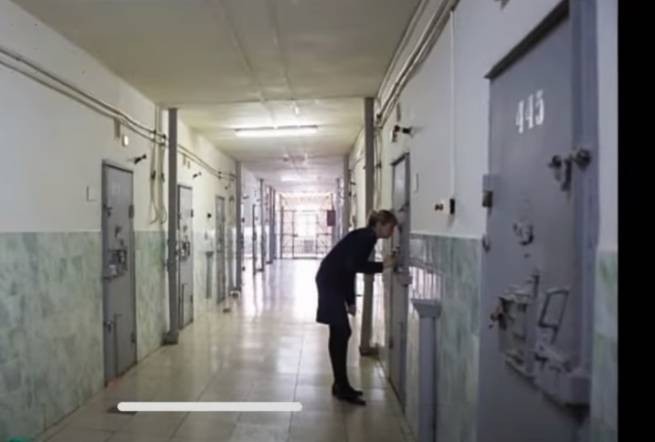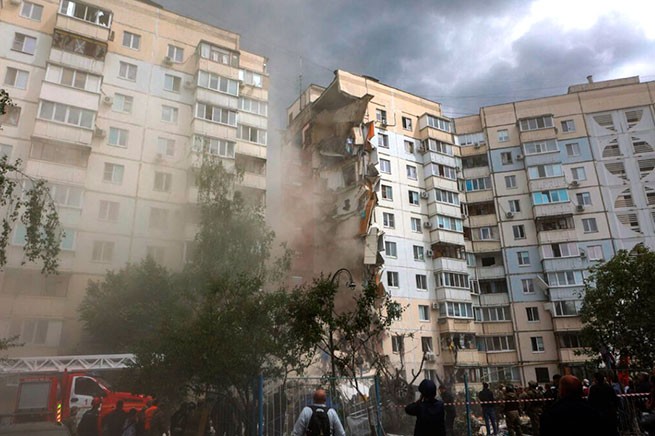The aftermath of a Ukrainian missile attack on Belgorod, Russia, earlier this month. Credit… Agence France-Presse – Getty Images
Heated debate has flared up in Washington about allowing the Ukrainian Armed Forces to attack Russian territory with American weapons, The New York Times writes.
The White House is arguing about how to allow Ukraine to fire American weapons at Russia. Following a recent trip to Kyiv, Secretary of State Antony J. Blinken is calling on the president to lift restrictions on Ukraine's use of American weapons.
Since the first US deliveries of advanced weapons to Ukraine, President Biden has never backed down from one ban: President Volodymyr Zelensky had to agree never to fire them on Russian territory, as it would violate Mr Biden's mandate “to avoid a third world war“
But the consensus around this policy is falling apart. There is now active debate within the administration, prodded by the State Department, about loosening the ban to allow Ukrainians to strike missile and artillery launchers located just over the border in Russia – targets that Zelensky said allowed Moscow to recently conquer territory.
The proposal, put forward by Secretary of State Antony J. Blinken after a sobering visit to Kyiv last week, is still in its infancy and it is unclear how many of his colleagues in Mr. Biden's inner circle have signed on. It has not yet been formally presented to the president, who has traditionally been the most cautious, officials said.
State Department spokesman Matthew A. Miller declined to comment on internal discussions on Ukraine policy, including Mr. Blinken's report after his return from Kyiv.
But officials involved in the discussion said Mr Blinken's position had changed because the Russians had opened a new war front, with devastating results. Moscow troops placed weapons just across the border from northeastern Ukraine and aimed them at Kharkov – knowing that the Ukrainians would only be able to use non-US drones and other weapons in response.
In an interview with The New York Times this week, Mr. Zelensky said the inability to fire U.S. missiles and other weapons at military targets in Russia gives Moscow a “huge advantage.”
For months, Zelensky has carried out attacks on Russian ships, oil facilities and power plants, but has done so primarily with Ukrainian-made (assembled) drones, which do not have the power or speed of American weapons. And increasingly, the Russians are shooting down or misdirecting Ukrainian drones and missiles, thanks to improved electronic warfare techniques.
Now the United States is under pressure to help Ukraine strike Russian military targets, even as Washington wants to maintain its ban on attacking oil refineries and other Russian infrastructure with American-provided weapons. Britain, usually in lockstep with Washington on military strategy, has quietly lifted its own restrictions so its Storm Shadow cruise systems can be used to strike Russia on a larger scale.
British Foreign Secretary David Cameron, a former prime minister, said during a visit to Kyiv ahead of Mr Blinken's visit that Ukraine “absolutely has the right to strike back at Russia”.
The United States is currently considering possibility of training Ukrainian troops inside the country, rather than sending them to a training ground in Germany. That would require the stationing of American military personnel on Ukrainian soil, something Mr. Biden has so far prohibited. That raises the question of how the United States would respond if the trainers, who would likely be based near the western city of Lviv, came under attack. The Russians periodically strike Lvov, even though it is located far from the main combat areas.
Another hint of a change in the situation has emerged in recent days. Defense Secretary Lloyd J. Austin III, repeating the administration's usual position—”we expect them to continue to use the weapons we provide against targets inside Ukraine”—appeared to suggest that for Russian aircraft operating securely on Russian soil, just beyond border, exceptions could be made to allow pilots to drop glider bombs on eastern Ukraine.
“The dynamics of the airspace have changed a little,” Mr. Austin conceded, but he had difficulty formulating a new standard. “And so… but again, I don’t want to speculate here on the podium on one, or the other, or the third type of action.” When a reporter responded by asking whether such Russian air operations were “prohibited or not prohibited?” Mr. Austin did not answer.
The Russians are accustomed to such debates, and they clumsily play on American fears about the escalation of the war. This week they began a very public exercise with units that will be involved in the use of tactical nuclear weapons, the kind that would be used against Ukrainian troops. Russian news reports say this is “a response to provocative statements and threats made by Western officials against Russia.”
However, the administration appears less sensitive to such threats than in the early days of the war or in October 2022, when there were fears that Russia, lacking the strength, could use these weapons against Ukrainian military installations. During that incident, some administration officials, having picked up conversations among Russian officers, feared there was a 50 percent chance of a nuclear weapon detonating. Today's teachings, by contrast, are seen as bleating and flexing muscles.
Victoria Nuland, who left her No. 3 position at the State Department this spring, has publicly stated that the administration needs to lift the ban on the use of its weapons against targets in Russia, which differs markedly from the administration's public position. “I think if the attacks are coming directly from behind the front lines in Russia, then those bases should be fair game,” she told ABC's This Week on Sunday.
I think the time has come for this because Russia has clearly escalated this war,” she added, noting that Russia's attack on Kharkov is an attempt to “destroy it without having to put boots on the ground.” So I think the time has come provide greater assistance to the Ukrainians in striking these bases inside Russia.”
Ms. Nuland has always been part of the much more hawkish camp within the administration, and her opinion has been in the minority. But over time, she won more and more arguments over whether to send Ukraine more sophisticated missiles and artillery systems, and each time Mr. Biden conceded, the worst fears he had about escalation were not realized.
In an interview with the Times, Mr. Zelensky dismissed concerns about escalation, saying Russian President Vladimir V. Putin had already started the war. And he believes it is unlikely that Mr Putin will ever follow through on his threat to use nuclear weapons.
Mr. Biden and some of his aides are clearly unconvinced. Over the past year, they have said they believe there is a red line that will lead to a tougher response from Mr. Putin. They just don't know where exactly it is and what the reaction might be.
In private conversations with Mr. Blinken last week and in an interview with The Times, Mr. Zelensky argued that at this desperate stage of the war it was critical to allow him to use American weapons against Russian military units. “This is part of our defense,” Mr. Zelensky told The Times. – How can we protect ourselves from these attacks? This is the only way.”
The author's opinion may not coincide with the opinion of the editors.







More Stories
Adjustment of the final decision of the peace summit (video)
North Korea sent Russia 10 thousand containers with 5 million shells
Putin announced the conditions for starting negotiations with Ukraine